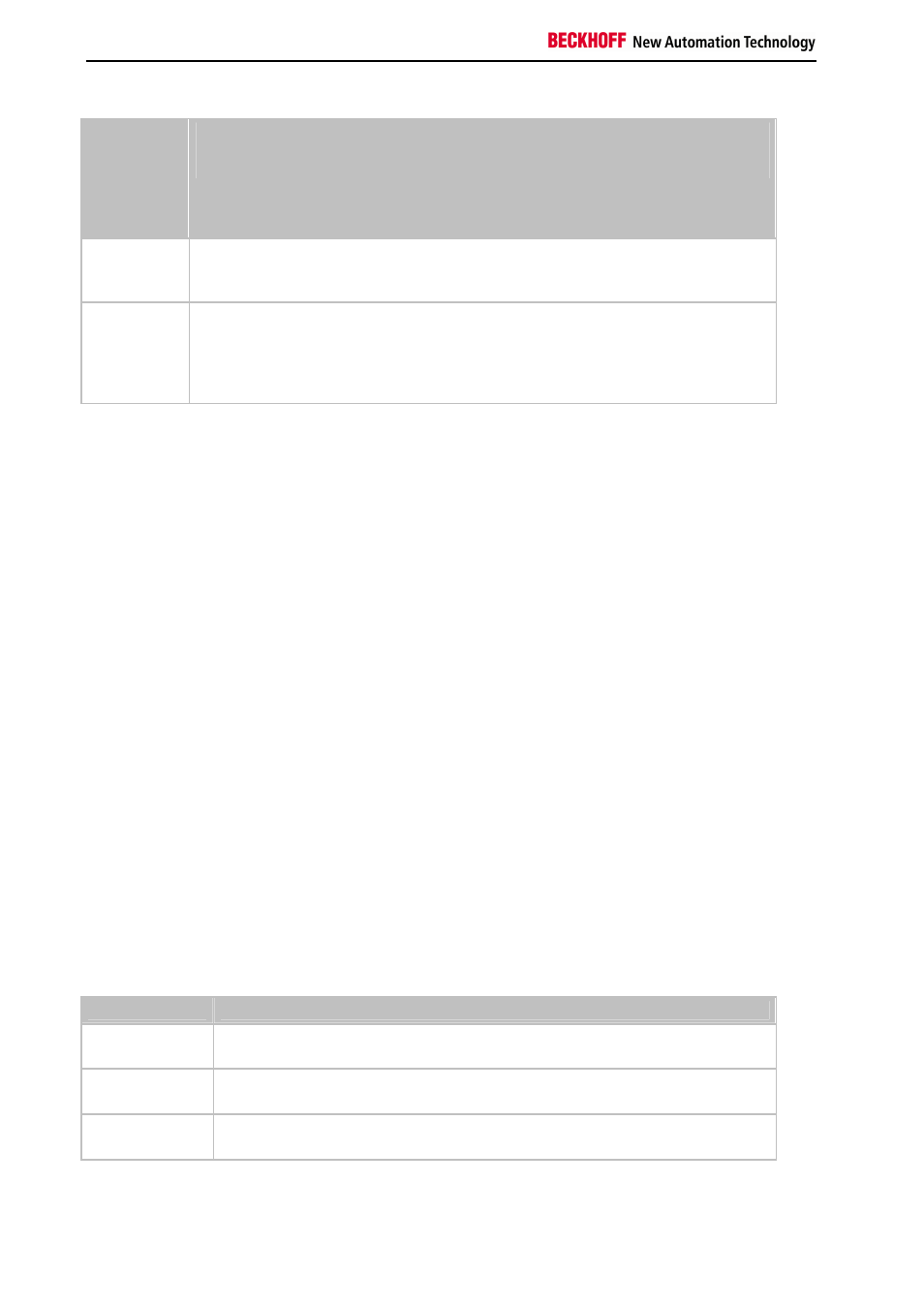Diagnostic functions – BECKHOFF BC3150 User Manual
Page 84

Safety Instructions
82
Fieldbus Components
Three types of device are distinguished:
DP master
class 1
(DPM1)
e.g. Beckhoff
PC master
card FC310x
This involves a central controller that exchanges information cyclically with the distributed
stations (slaves) in a specified message cycle. Typical devices include, for instance,
programmable logic controllers (PLCs) or PCs.
DP master
class 2
(DPM2)
Devices of this type are engineering, project design or operating devices. They are used for
commissioning, for servicing and diagnosis in order to configure the connected devices, to
evaluate measured values and parameters and to interrogate the status of devices.
DP slave
e.g. Beckhoff
Bus Coupler
IPxxxx-B310
A Profibus DP slave is a peripheral device (I/O, drive, measuring transducer etc.) that reads
input information and passes output information on to the peripherals. It is also possible to
have devices that only handle either input or output information. The quantity of input and
output information is device-dependent, and may not exceed 246 bytes of input data and
246 bytes of output data.
In single master systems only one master is active on the bus in the operating phase of the bus system. The PLC
controller is the central control element. The distributed slaves are coupled to the PLC controller via the transmission
medium. The shortest bus cycle time is achieved with this system configuration.
In a multi-master mode there is more than one master on the bus. They either form sub-systems that are
independent of one another, each consisting of one DPM1 and the associated slaves, or additional project design
and diagnostic devices. All the DP masters can read the input and output images of the slaves. Writing the outputs is
only possible for one DP master (the one assigned as DPM1 during the project design). Multi-master systems
achieve a medium bus cycle time. In time-critical applications, the increase in bus cycle time should be observed by
adding a diagnostic tool.
Basic device files (GSD)
In Profibus DP, the performance characteristics of devices are documented by the manufacturers and made available
to users in the form of a device data sheet and of a basic device file. The structure, content and coding of these basic
device files (GSD) is standardized. They make it easy to plan a project with any Profibus DP slaves using project
planning devices from a various manufacturers. The Profibus User Organization (Profibus Nutzer Organization -
PNO) archives this information for all manufacturers, and will provide information about the GSD from any
manufacturer on request. The GSD files are read by a Profibus master configuration software, and appropriate
adjustments are transferred to the Profibus master. Please see the appropriate software manual from the master
manufacturer for a description.
The Beckhoff GSD files may be obtained from the internet under www.beckhoff.com.
Diagnostic functions
The extensive diagnostic functions of Profibus DP allow rapid fault localization. Diagnosis of the Beckhoff Bus
Coupler is not activated in the default setting of the type file or the GSD file. The diagnostic messages are transmitted
over the bus and collated by the master.
They are divided into three levels:
Diagnosis type
Description
Related to the
station
Messages relating to the general readiness of a device for operation such as over-
temperature or under-voltage
Related to the
module
These messages indicate that diagnostic signals are pending within a specific I/O sub
range of the device (e.g. an 8 bit output module)
Related to the
channel
Here the cause of an error is related to a single input/output bit (channel), such as a
short circuit on output 2
The Beckhoff Profibus slaves from the IPxxxx-B310, IL230x-B310 and IL230x-C310 series support the Profibus DP
diagnostic functions. Assessment of the diagnostic data by means of the controller depends on the support for the
Profibus master. Please refer to the device manuals for the master interfaces for details of how to handle the
diagnosis.
